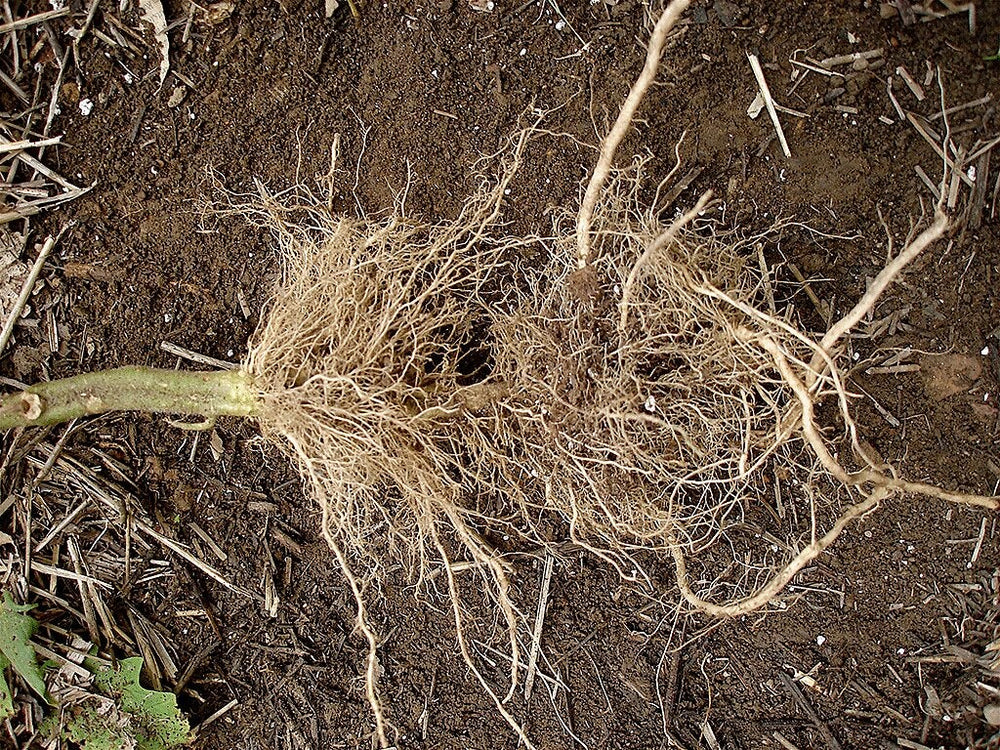Did you know that what you see above ground in your plants is really determined by what's hidden underground? What happens underground, where the plant roots live, drives plant growth. The bigger and healthier the root system, the bigger and healthier the plant.
What do healthy roots do?
Many things. First, they provide the anchor needed to keep a plant in place. More importantly, roots are the lifeline of a plant, taking up air, water, and nutrients from the soil and moving them up into the leaves, where they can interact with sunlight to produce sugars, flavors, and energy for the plant. That is the magic of how things grow.
Additionally, biologists have recently discovered that roots actually secrete compounds that affect the microorganisms in the soil, doing things like helping protect the plant from disease and encouraging it to absorb nutrients from the soil. There is a whole world of activity underground! You can read more about it in our article "The Soil is Alive. Really!"
So how do you get a system of good, healthy roots? Remember seven words: "Healthy, deep soil. Adequate moisture and nutrients." If everything you do in your garden works toward that, your plants should thrive. (Granted, there are ugly wilts and other diseases that can ruin even the best-laid plans, but you can learn more about those later if you need to.)
Containers and Raised Beds
To create a good environment for roots, fill containers and raised beds with the right soil for growing. Use premium quality potting mix, such as Miracle-Gro® Potting Mix, in pots; in raised beds, use a raised bed soil like Miracle-Gro® Raised Bed Soil, which is less fluffy than potting mix but not as dense as garden soil. Garden soil, both the bagged kind and the kind taken from an actual in-ground garden, is too heavy and will over-compact when used in a raised bed or container. Roots need air and space, and won't grow as well in compacted soil.

In-Ground Gardens
If you have an in-ground garden, add lots and lots of organic matter — think bagged or homemade compost— to the ground. Some municipalities will even deliver a truckload of composted leaf litter for a fee. Or, you can buy it from a garden center. Don't bother adding topsoil; just get compost and work it into the soil that you already have. (Be sure to add more every year because it decomposes.)
Water and Feed Plants Regularly
Healthy roots need a regular source of moisture, so make it a habit to water regularly. A good rule of thumb is to make sure plants get an inch of water per week through rain and/or watering. (Plants in containers may need more.) You'll also want to apply a continuous-release fertilizer, such as Miracle-Gro® Shake ‘n Feed® Tomato, Fruit & Vegetable Plant Food throughout the season. (As with all fertilizers, follow the directions on the label.)
When you garden, always think about the roots. Ask yourself, what am I doing to make sure that these little roots will grow big and happy? Loose soil, adequate water, and plenty of nutrients are the keys to healthy roots and productive plants.




 Herbs
Herbs
 Vegetables
Vegetables
 Fruit
Fruit
 Flowers
Flowers
 Succulents
Succulents


